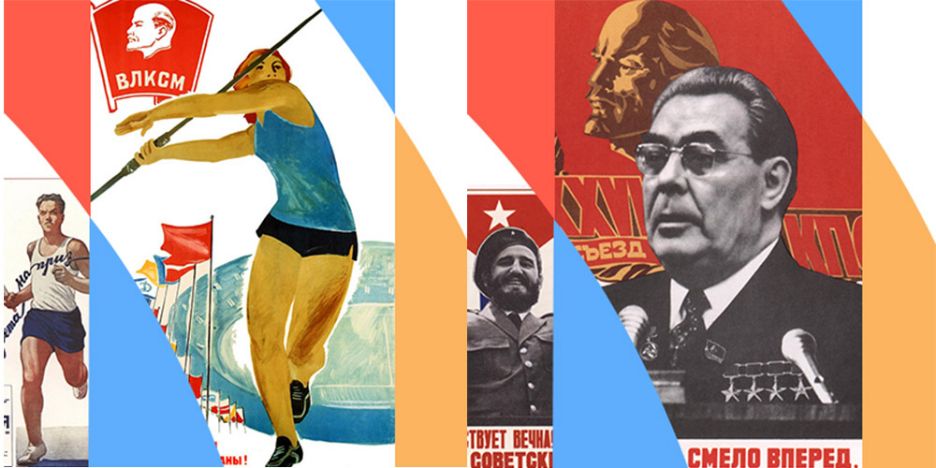We will see how Soviet era propaganda posters re-emerged powerfully in the 1930s following the extensive circulation during the Civil War. We will explore what is referred to as iconography of Soviet poster art.
Here are the other 2 parts of the series:
- Part I - Propaganda Posters of USSR - Why the Bolsheviks needed poster art?
- Part II - The Soviet Union Poster - Soviet Posters During the Civil War
Here are our most popular Soviet poster categories:
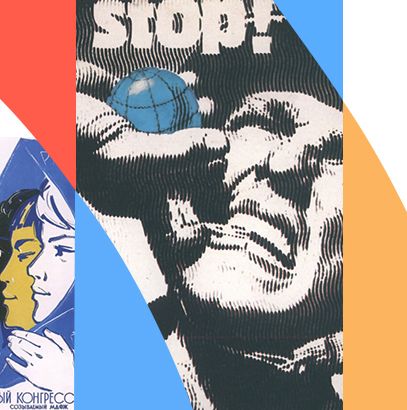 |
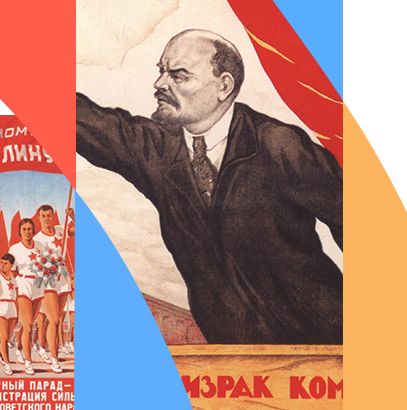 |
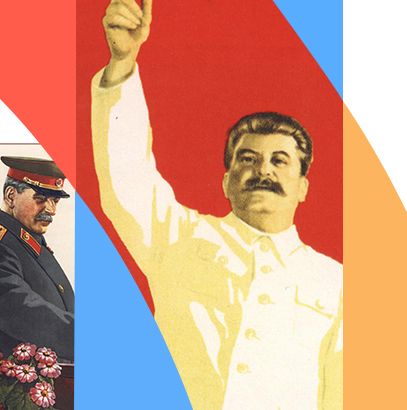 |
| Cold War posters | Communism propaganda posters | Stalin posters |
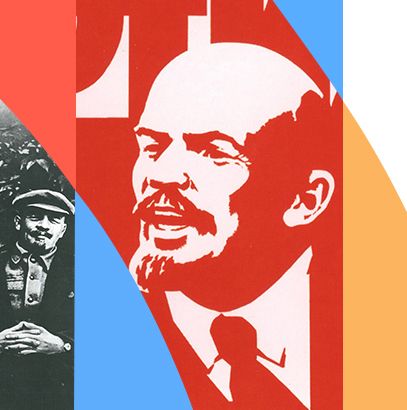 |
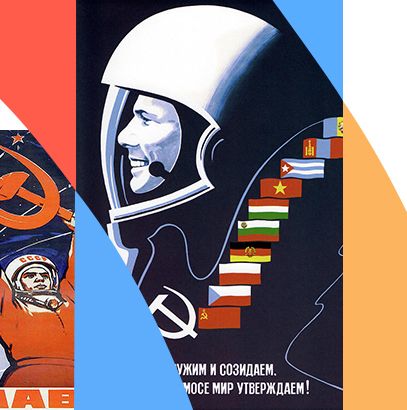 |
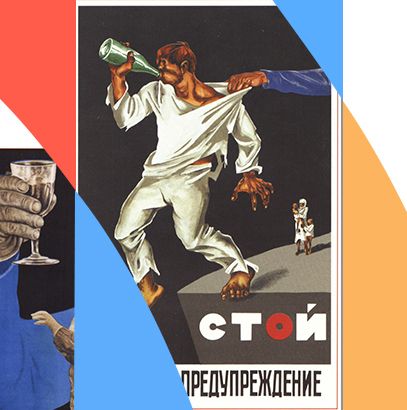 |
| Lenin posters | Soviet space propaganda posters | Soviet anti drinking posters |
The Five Year Plan and Re-emergence of Soviet Era Posters
Following the success in the Civil War the Bolsheviks reduced the spread of Soviet era propaganda posters that so far had reached circulation of almost 10 million in total. The New Economic Policy (proposed by Lenin in 1921) placed increased emphasis on the written and spoken word and the role of radio and the Bolshevik press gained more prominence. This trend reveresed by the time of the adoption of the First Five Year Plan in 1928. Soviet era propaganda posters were again in fashion.
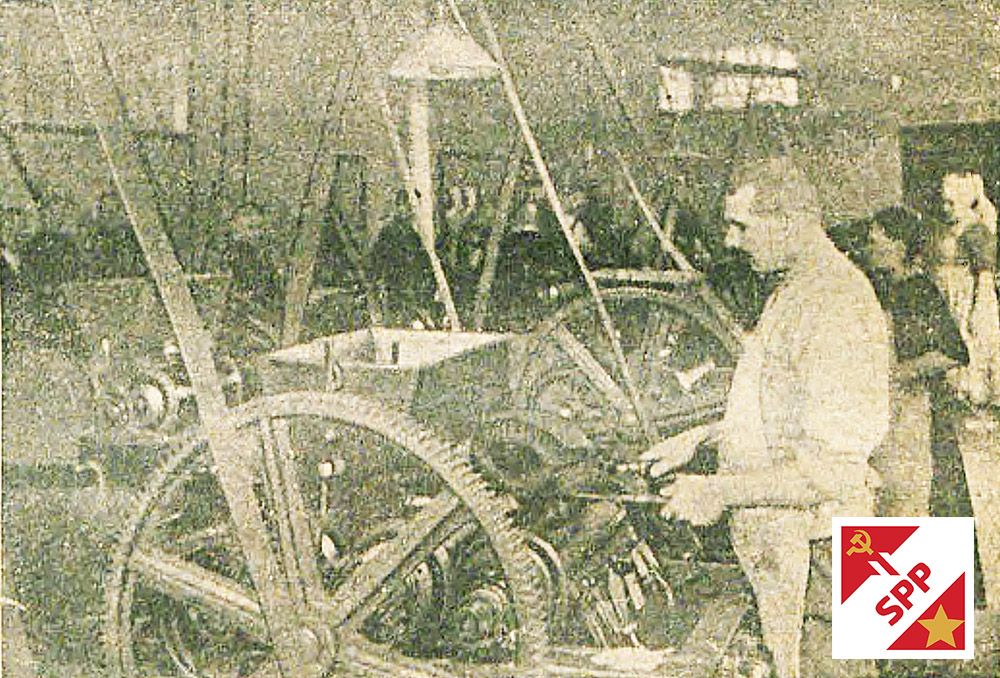 |
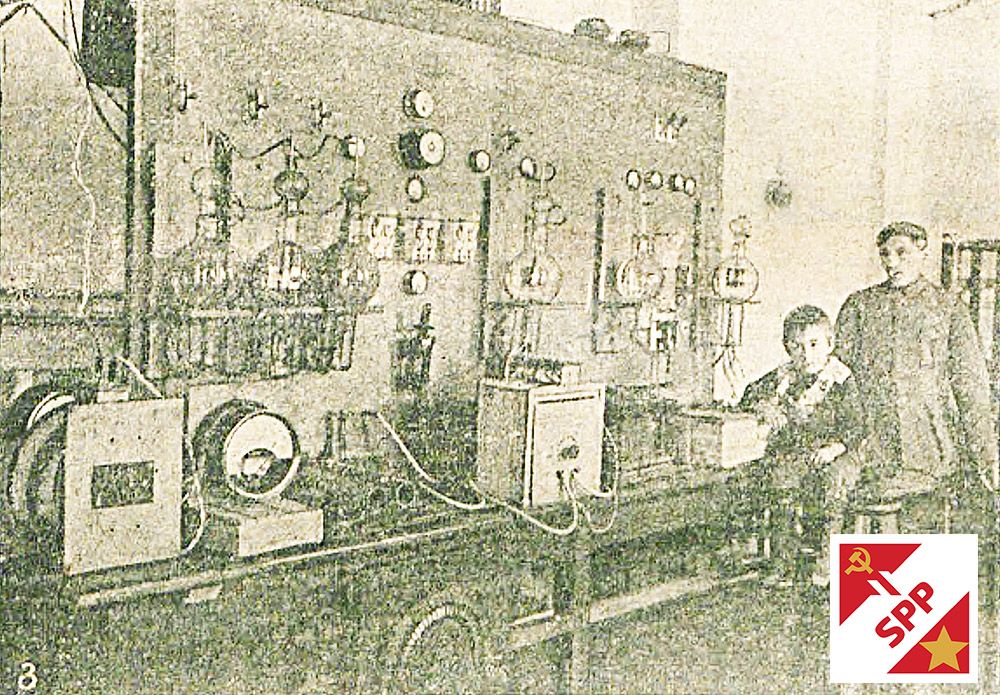 |
| Printing press in USSR, 1923, Ogonek magazine | Professor Bruevich in his laboratory for R&D of radio transmission technologies, 1923, Ogonek magazine |
The onset of the First Five Year Plan reversed the decrease in circultion and prominence of the political poster medium. Other forms of visual propaganda also gained momentum. Political visual art once again became central in the party's strategy of mobilising society on a grand scale and project the messaging the Bolsheviks needed to reach the masses. They would use poster propaganda again to implement their vision of the Soviet man as an individual and as part of the social and political fabric.
The Soviet leaders knew that transformation of mass consciousness at the scale required will need extraordinary approaches being taken. The old/traditional ways of thinking were deeply ingrained and hard to influence. New posters were produced to address the new needs of the party, this time around in the era of farm collectivisation and mass industrialisation.
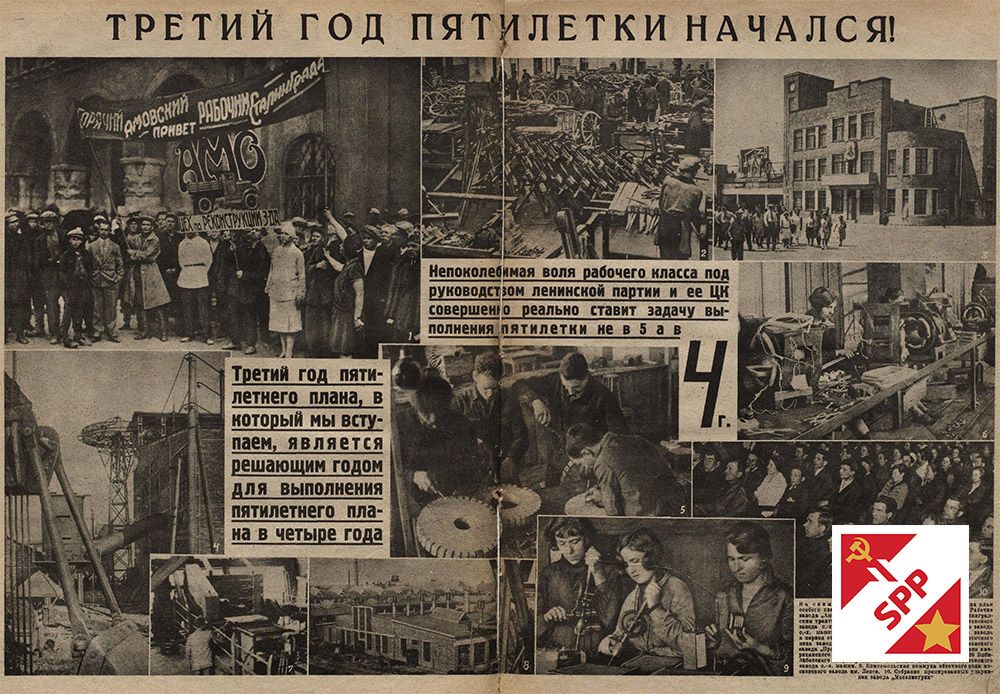 |
| Article on the beginning of the third year of The Five Year Plan, source Ogonek magazine |
Soviet Era Propaganda Posters in the 1930s
In the 1930s visual propaganda gradually became more prevelant and extensive. The Art Department of the USSR was now supervising all Soviet era poster production. The State established Publishing house (Izogiz) that was run under the direct supervision of the Central Committee of the Communist Party of the Soviet Union. Therefore the poster topics, texts and imagery were dropped to the artists from above and supervised by state censors. Centralisation of party control over the production of posters increased as the volumes printed and disseminated expaned dramatically.
Due to the variety of collectives producing Soviet era posters during the Civil War there were many more designs. An individual poster design would usually not exceed circulation of 25-30 thousand. In the 1930s, with the centralisation of the creative process, some of the posters (seen as important) would be printed from 100 to 250 thousand copies each. Be it in cities and towns or the countryside, on factory floors and collectivised farms, private homes and in schools, virtually every Soviet citizen was confronted with imagery that was essentially there to indoctrinate them in the new world they lived in and motivate them in their work.
The Great Patriotic War
The Second World War marked another period of large scale societal, military and economic mobilisation. The nation was in a mortal struggle and being so vast and populous it had to be mobilised rapidly, extensively and efficiently. The State turned to visual propaganda once again. Soviet WWII posters were circulated in vast volumes all across the country. Many themes of Tsarist Russia's World War I poster art were reused and redeployed.
Stalinist Propaganda Posters
Following WWII a period of so called High Stalinism (1946- 1953) took place in USSR. Visual propaganda turned more mythical than ever and vision of Socialist society and life bordering a paradise was projected into the public mind. Socialist realism, a visual art genre that is direct and understandable by any social strata, was employed for this goal.
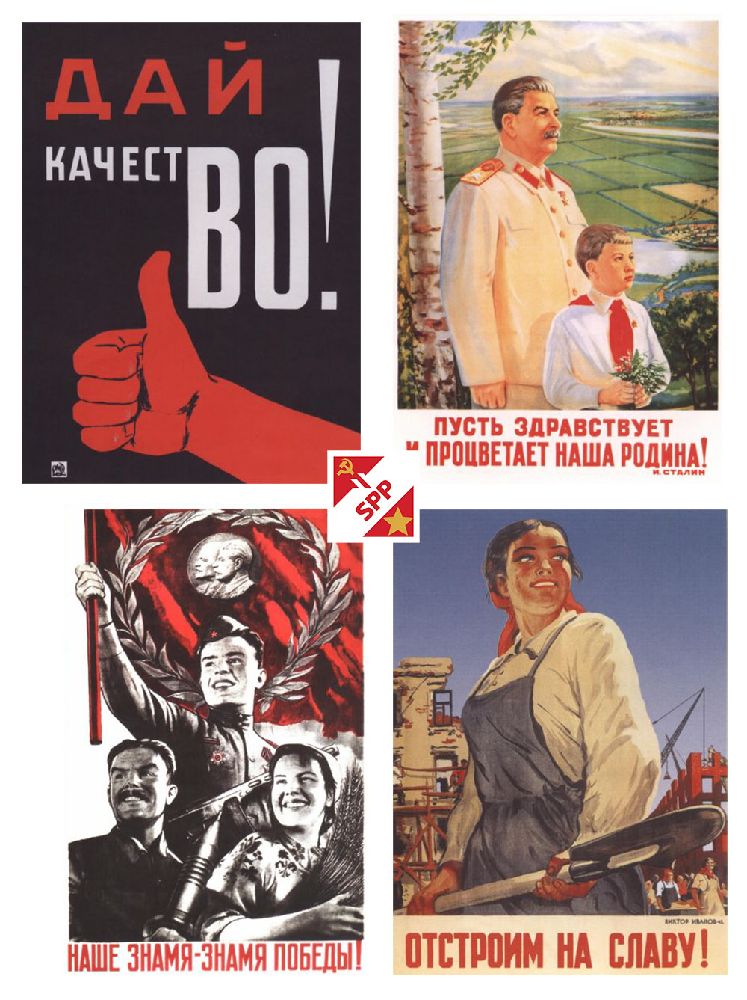 |
| Soviet Propaganda posters from the 1930s and 1940s |
How Propaganda Posters Changed Over Time
By the 1930s many poster artists aimed at creating a new, specifically proletarian culture. The challenge was that artists needed to be able to speak the language of the ordinary Soviet citizen. Therefore they had to use the right images, symbols and styles that their audiences could grasp. Therefore this new message had to draw and formulate art based on pre-existing forms and vocabularies.
According to Hobsbawm the approach was to seek well known historical material and use it to create invented traditions that carried new meaning for novel purposes. Such material is accumulated over time in every society and such familiar langugage of symbolic practice and communication could be easily identified and exploited.
Sources of Inspiration for Poster Artists
For inspiration propaganda artists explored the rich Russian tradition (among others), here are some of the sources they utilised:
- commercial advertising,
- fine arts,
- religious and folk art,
- classical mythology,
- the imagery of Western European labor and revolutionary movements,
- and political art of the tsarist era
They would use different sources and elements at different periods. A special visual language was created from the amalgamation of the elements of these sources. Therefore, combining political ideology with mythology made Soviet visual propaganda particularly unique and enthralling.
Political Iconography
Early on Soviet propagandists amalgamated imagery that combined traditional art and the new very particular expressiveness of the Bolshevik message. These novel images were divided into heroes (saints) and enemies (the devil and daemons) and standardised into icon-like art that had a fixed pattern (or the "podlinnik" in Orthodox religious art). Instead of existing old time institutions and relations in society these new icons presented a new system of signs imposed by the Soviet state on the people to transform the consciousness of the masses across the nation. Similarly to other invented traditions in other societies these image-icons were transmitted consistently and repetetively to their audiences and resonated strongly due to their inspiration being sourced from existing mythologies from the Russian past and tradition.
In Part IV of this series we will look into 3 different categories of iconographic Soviet era propaganda posters:
- The Icon of the Worker - posters of workers were at the core of Bolshevik ideology. In Marxism-Leninism ideology the proletariat were the chosen people and idealised. With the iconography of the workers the Soviets aimed at asserting their continuity with the past and their ideological vision for the future;
- Iconography of Women - Soviet women posters evolved over time. In the beginning women were presented as subordinate to workers and peasants and didn't belong to the league of Soviet heroes at the time. Later on, particularly during collectivisation, women were elevated in status;
- Icon of the Leader (the “Vozhd”) - Stalin posters and Lenin posters as expected idealised the leaders into semi-gods according to their personality cults but also as symbols and examples of the new Soviet man;
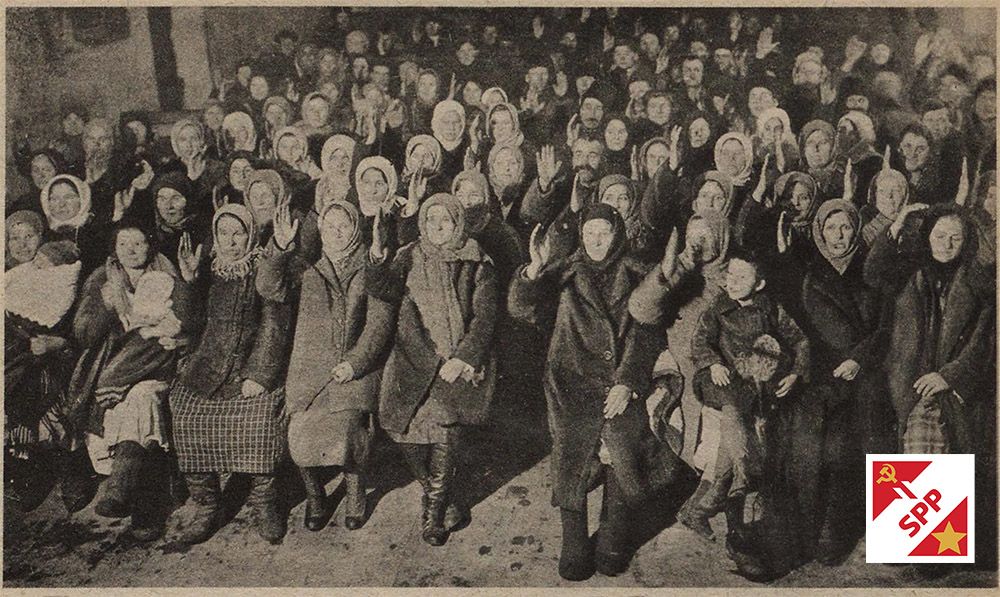 |
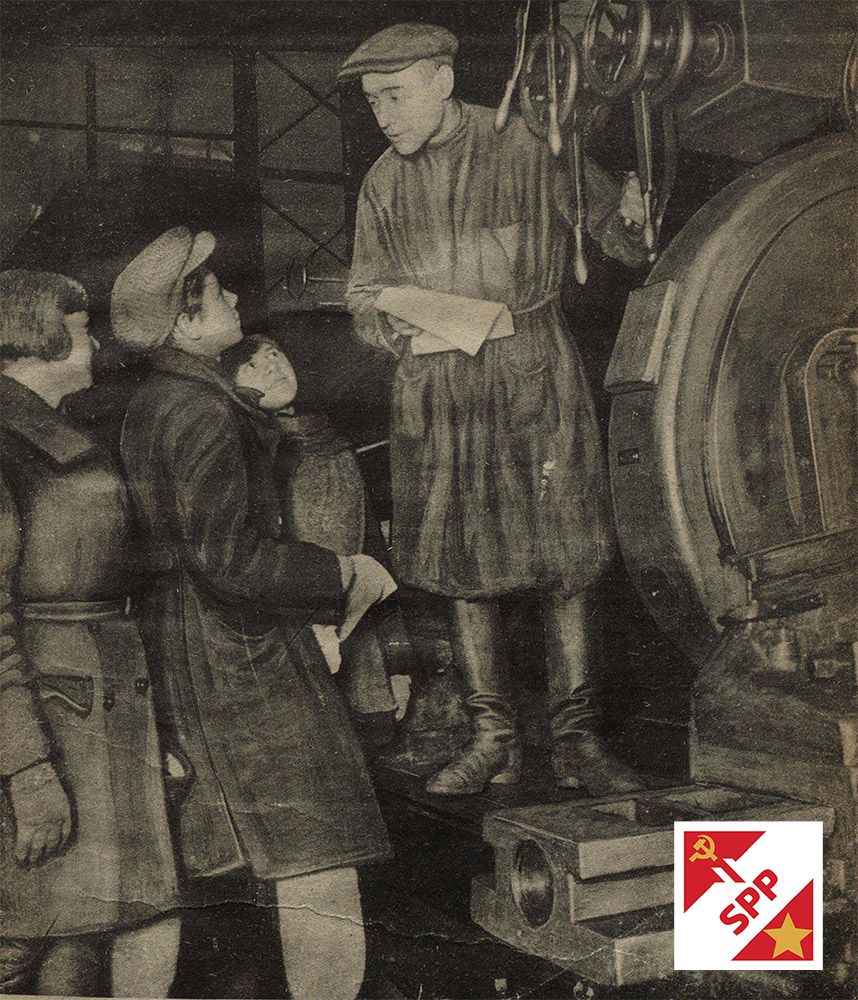 |
| Women at a local committee meeting in a Soviet village, 1930s, Ogonek magazine | Workers at a Soviet factory floor during inspection, 1930s, Ogonek magazine |
This text is largely based on Iconography of Power: Soviet Political Posters under Lenin and Stalin (Volume 27) First Edition by Victoria E. Bonnell. You can find it on Amazon from this link.
END







